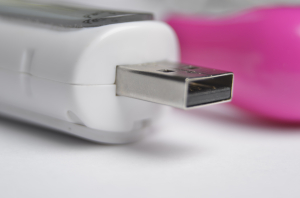Although your average computer or laptop comes with at least 250 gigabytes (GB) of storage space, you might soon find that it proves to be less than you imagined. With the download and sharing of movies and series, you might require space in the ranges of terabytes (TB), rather than gigabytes. If you find yourself continually having to delete old files to make space for new ones, perhaps the time has come to invest in an external hard drive (HDD). With a whole spectrum of options on the market, from feather light USB flash drives that double as key chains to the bulkier desktop models, it can get confusing when deciding on an external HDD for yourself. The most important key to making the decision is to keep in mind what exactly you are planning to use the external HDD for.
 Storage capacity
Storage capacity
The main deciding factor will be your reason for acquiring an external HDD. If you want to easily transfer small files or documents between your home computer and work, then a USB flash drive will be more than sufficient. But, if you are looking for a device on which to store your family photos or home movies, then you will need a bigger external HDD. Keep in mind that documents and music take up less space than photographs and videos. A 3TB external hard drive can store approximately 960,000 photographs, 50,000 hours of music or 3,000 hours of video. You usually get better value for money the bigger your drive is – they become cheaper per megabyte as they get bigger. Also keep in mind that, even if you don’t have 3,000 hours of movies yet, you never know what will happen in the future. If in doubt – get the external HDD that can store more.
Type of computer
In the old Mac vs. PC debate, the external HDD also factors in. The Mac OS X platform uses a HFS+ file system, where a Windows operating systems works with NTFS file systems. Many externals are Mac- or PC-specific, and if you should buy a PC-specific drive for use on your Mac, you will need to reformat the drive before you can use it. The Mac OS X operating system can read files on the NTFS systems but cannot write them, however software is available for Macs that allow you to use a PC-specific drive on either system. You can download NTFS-3G for free to do this.
Interface
The type of connection that your external HDD has to the computer will also determine the speed at which transfers can take place. At the moment, USB 2.0 is the most widely used interface but it is quickly being taken over by the much faster USB 3.0 ports. Where a USB 2.0 port has transfer rates at a top speed of 480 MB per second, the USB 3.0 connection allows a ten times faster maximum transfer rate at a whopping 5 GB per second. An even more tempting option is the Thunderbolt ports – a common point of connection for the latest Macs, but becoming more common on laptops and desktop computers as well. In a review done by pcworld.com they say that Thunderbolt ports can do transfers op up to 10 Gbps – “speedy enough to transfer a full-length high-definition movie in less than 30 seconds”. The price for this speedy efficiency is still high though, as a 500GB Thunderbolt interface HDD costs roughly the same as a 2TB USB 3.0 interface disk.
Portability
The way that the external HDD connects to the computer is also determined largely by what kind of external you buy. For the heavier desktop versions, it is likely that a secondary power source will be needed, either through a second USB port or a connection to a power outlet. If you are buying a desktop version, make sure it has a built-in fan, as that will extend the life. Desktop versions are less likely to become damaged (as they are hardly ever moved around) and price wise they have a higher capacity for the same amount, but you lose functionality if you need something on-the-go. To protect your data with a portable external HDD, you can look into encryption software, which will prevent your data from being stolen (or in case the disk gets lost) and make sure you have a solid case which can absorb shock and prevent damage if the disk should fall in transit.
Once you’ve narrowed down your choices and you need to make a final decision, always keep in mind that technology is evolving at breakneck speeds. Rather get something with a newer interface, faster speeds or more capacity than the one that might be outdated in a year or two. You won’t regret it.
About the Author
Marilu Snyders is a digital horder with more (legally obtained) movies, music, and TV shows than she can reasonably expect to watch in her lifestime, and still the collecting goes on. Her world might not fall apart if something should happen to one of her external drives, but it's still a comfort to know that there are specialist companies, like Datadetect.com.au, which can restore lost data and keep her addiction to Mad Men fed.